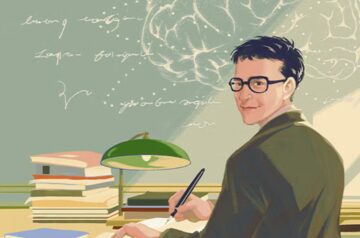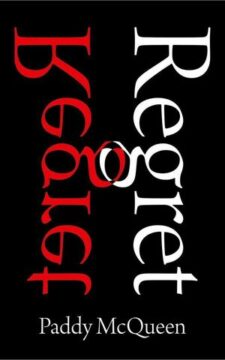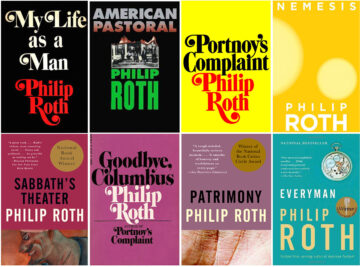Enjoying the content on 3QD? Help keep us going by donating now.
Category: Recommended Reading
Friday Poem
July 4th, 2025
Today is not a day for celebration.
Forget the fireworks.
To march down the center of Main
in party clothes under a soiled banner
singing “Joy To The World” would be
like showing up at a funeral
dressed to kill while warbling
a heavy-metal version of
Happy Days Are Here Again.
The burying of the Constitution
being nigh: the lights of the Capital
flickering out from the surge of
dark energy generated at a
hate-mill in the middle finger
of Florida, the red plow of a
tsunami of ignorance inundating
campuses of education, leveling
the hope of the young to be spared
from the likes of Genghis Khans,
This is not a time to party unless
you are in the retinue of a heartless
host whose idea of celebration is to
sit in Caesar’s chair in a coliseum
while lives of gladiators are
sacrificed to his whims of
hurt and blood.
A (now) Necessarily Anonymous American,
(Screw ICE)
Enjoying the content on 3QD? Help keep us going by donating now.
The Geological Sublime
Lewis Hyde at Harper’s Magazine:

Charles Darwin had no trouble discarding Adam and Eve, but that did not dispose of a problem he shared with Lyell: how to build a theory when a key element—the apparent infinity of time—defies comprehension. By my reading, several strategies arose. The first was to split infinity into tiny pieces, spans of time short enough to understand and work with. That is to say, Lyell and Darwin invented a kind of integral calculus, a method of adding together a series of infinitesimals, of minute changes that can, over “the lapse of ages,” produce huge consequences. Minute after minute, little waves hit a granite cliff, or year after year, the wings of pigeons vary slightly. Then, in the fullness of time, a wide pebble beach replaces the cliff, and a pigeon with an astounding fantail replaces its ancestor—or even, after an “accumulation of infinitesimally small inherited modifications” over “an almost infinite number of generations,” a bird appears that is not a pigeon at all but an entirely new species.
A second strategy begins with the obvious fact that the geological record has distinct periods. A cliff by the seashore reveals layers of limestone, sandstone, and cobbles, each presumably a distinct chapter in the history of the earth. If the years it took to write each chapter could be determined, then it would be easier to speak of those otherwise “very remote eras.”
more here.
Enjoying the content on 3QD? Help keep us going by donating now.
Curzio Malaparte’s Shock Tactics
Thomas Meaney at The New Yorker:

“You’re a born Fascist, one of the authentic ones,” the Italian writer Piero Gobetti wrote to his friend Curzio Malaparte in 1925, three years into Mussolini’s dictatorship. Gobetti, twenty-four and hailed as the most brilliant liberal writer of his generation, hoped to prevent Malaparte, then twenty-seven, from throwing all his talent behind the Fascist cause. “Don’t you understand that you’re wasting time, that the Fascists are playing you, that in the party you’re a fifth-class man, that your writings for the past year haven’t been worth a damn?” he wrote. Gobetti died the next year, from injuries inflicted by Black Shirts. Malaparte, by then, was making his name as one of Mussolini’s highbrow henchmen. During the Second World War, he became the regime’s star foreign correspondent, mobilizing the techniques of surrealism to evoke the era’s savagery. Malaparte rode to the Eastern Front with the Wehrmacht and toured the Warsaw ghetto with Nazi commanders and their wives. A fabulist whose medium was reality, he assembled his impressions into a nightmarish triptych—“The Volga Rises in Europe,” “Kaputt,” and “The Skin”—which forms the basis of his reputation today. With their uncanny sang-froid, their suave delight in ripping off the skin of experience, they leave no reader unmarked.
more here.
Enjoying the content on 3QD? Help keep us going by donating now.
Thursday, July 3, 2025
“Dog” is a weird word
Colin Gorrie at Dead Language Society:
 No, this is no hound. It’s just a dog.
No, this is no hound. It’s just a dog.
But somehow, this word dog — a word that wasn’t even dignified enough to write down once in the entire history of English writing before the eleventh century — would come to be the normal English word for man’s best friend, almost displacing the older form hound.
Stranger still, we don’t know for sure where the word dog came from.
We do have some theories, though. But I’ll need the help of some pigs, some frogs, and even some earwigs to explain.
More here.
Enjoying the content on 3QD? Help keep us going by donating now.
Finding Peter Putnam
Amanda Gefter at Nautilus:
 His name was Peter Putnam. He was a physicist who’d hung out with Albert Einstein, John Archibald Wheeler, and Niels Bohr, and two blocks from the crash, in his run-down apartment, where his partner, Claude, was startled by a screech, were thousands of typed pages containing a groundbreaking new theory of the mind.
His name was Peter Putnam. He was a physicist who’d hung out with Albert Einstein, John Archibald Wheeler, and Niels Bohr, and two blocks from the crash, in his run-down apartment, where his partner, Claude, was startled by a screech, were thousands of typed pages containing a groundbreaking new theory of the mind.
“Only two or three times in my life have I met thinkers with insights so far reaching, a breadth of vision so great, and a mind so keen as Putnam’s,” Wheeler said in 1991. And Wheeler, who coined the terms “black hole” and “wormhole,” had worked alongside some of the greatest minds in science.
Robert Works Fuller, a physicist and former president of Oberlin College, who worked closely with Putnam in the 1960s, told me in 2012, “Putnam really should be regarded as one of the great philosophers of the 20th century. Yet he’s completely unknown.”
That word—unknown—it came to haunt me as I spent the next 12 years trying to find out why.
More here.
Enjoying the content on 3QD? Help keep us going by donating now.
The great friendship collapse: Inside The Anti-Social Century
Enjoying the content on 3QD? Help keep us going by donating now.
The Georgist Roots of American Libertarianism
Reed Schwartz at Asterisk:
 In 2023, Sam Altman embarked on a world tour, meeting with heads of state to discuss AI regulation. According to Time’s CEO of the Year Profile, he was also quietly promoting a more obscure cause — the ideas of the nineteenth-century political economist Henry George. As Altman explained in a 2021 blog post: If AI eventually automates most jobs, wealth will increasingly derive from the ownership of capital. To prevent runaway inequality, he proposed that the United States create a universal dividend, funded with taxes on large firms and — following George — the unimproved value of land.
In 2023, Sam Altman embarked on a world tour, meeting with heads of state to discuss AI regulation. According to Time’s CEO of the Year Profile, he was also quietly promoting a more obscure cause — the ideas of the nineteenth-century political economist Henry George. As Altman explained in a 2021 blog post: If AI eventually automates most jobs, wealth will increasingly derive from the ownership of capital. To prevent runaway inequality, he proposed that the United States create a universal dividend, funded with taxes on large firms and — following George — the unimproved value of land.
George has maintained a loyal (if marginal) following since his death in 1897. Today, he is rarely encountered outside of history of economics courses — and urbanist Twitter.1 But during the Gilded Age, he was one of the world’s foremost critics of inequality, and he is generally invoked in the same spirit today.
Notable, then, is the praise George has also received from Peter Thiel. How did an elitist libertarian come to favorably cite an egalitarian populist? The alignment is not unprecedented. Through a tradition that stretches from early Zionists at the turn of the 20th century to the Old Right in the interwar period and the first advocates for charter cities in the 1950s, the Georgist ideology persisted long after it was dropped by the American left. A libertarian turn to George is not a departure, but a homecoming.
More here.
Enjoying the content on 3QD? Help keep us going by donating now.
What Is Regret?
Max Lewis at Notre Dame Philosophical Reviews:
 If to err is human, then so too is to regret. At least if we follow Paddy McQueen in his recent book about the nature, normativity, and politics of regret. According to McQueen, regret is, roughly, a painful feeling of self-reproach or self-recrimination for making a “mistake” (21). Like all emotions, regret is more than just a judgment, though it has a constitutive thought type (i.e., “I have made a mistake”), which can be realized by many different token thoughts (e.g., “I wish I had not done that”, “I should have acted differently” or “what an idiot I am!”). Regret’s “phenomenological core” is the feeling of “kicking oneself” or “beating oneself up” for a mistake (21). Regret directs our attention to the mistake in decision-making we have made and motivates us to avoid making the same kind of mistake in the future (72, 136).
If to err is human, then so too is to regret. At least if we follow Paddy McQueen in his recent book about the nature, normativity, and politics of regret. According to McQueen, regret is, roughly, a painful feeling of self-reproach or self-recrimination for making a “mistake” (21). Like all emotions, regret is more than just a judgment, though it has a constitutive thought type (i.e., “I have made a mistake”), which can be realized by many different token thoughts (e.g., “I wish I had not done that”, “I should have acted differently” or “what an idiot I am!”). Regret’s “phenomenological core” is the feeling of “kicking oneself” or “beating oneself up” for a mistake (21). Regret directs our attention to the mistake in decision-making we have made and motivates us to avoid making the same kind of mistake in the future (72, 136).
What makes regret fitting (i.e., reasonable, rational, appropriate, or called for)?
more here.
Enjoying the content on 3QD? Help keep us going by donating now.
Alicja Kwade On Gordon Matta-Clark And More
Enjoying the content on 3QD? Help keep us going by donating now.
The Death and Life of the Straight White Man’s Novel
Marc Tracy at the NY Times:
 “Unwilling to portray themselves as victims (cringe, politically wrong), or as aggressors (toxic masculinity), unable to assume the authentic voices of others (appropriation), younger white men are no longer capable of describing the world around them,” Savage, who is 41, wrote. What they do write, he added, avoids “grappling directly with the complicated nature of their own experience in contemporary America.”
“Unwilling to portray themselves as victims (cringe, politically wrong), or as aggressors (toxic masculinity), unable to assume the authentic voices of others (appropriation), younger white men are no longer capable of describing the world around them,” Savage, who is 41, wrote. What they do write, he added, avoids “grappling directly with the complicated nature of their own experience in contemporary America.”
Savage’s essay has attracted both derision and amens in newspapers and journals, on social media and Substacks, over drinks and in group chats. “I think the nerve I hit is fairly obvious,” Savage said in an interview, adding, “being able to put numbers behind it was cathartic to some people and triggering to others.” Humming underneath the disputation is a less tangible but more significant question. Let us say the perspective of the straight white man is being dampened in the world of literary fiction. Should we care?
more here.
Enjoying the content on 3QD? Help keep us going by donating now.
Thursday Poem
The Where in My Belly
Scientists say my brain and heart
are 73 percent water—
they underestimate me.A small island—minis, I emerged
among Minnesota’s northern lakes,
the where of maanomin—wild rice in my belly.I am from boats and canoes and kayaks,
from tribal ghosts who rise at dawn
dance like wisps of fog on water.My where is White Earth Nation
and white pine forests,
knees summer stained with blueberries,
pink lady slippers open and wild as my feet.I grew up where math was Canasta,
where we recited times tables
while ice fishing at twenty below,
spent nights whistling to Northern Lights.I am from old: medicines barks and teas;
from early—the air damp with cedar
the crack of amik, beaver tails on water.Their echo now a warning to where—
to where fish become a percentage of mercury,
become a poison statistic;
to where copper mines back against
a million blue acres of sacred.I am from nibi and ogichidaakweg
women warriors and water protectors, from seed
gatherers and song makers.The wet where pulse in my belly whispers and repeats
like the endless chant of waves on ledgerock
waves on ledgerock on ledgerock on waves
on water. . .nibiKimberly Blaeser
from Split This Rock
—listen here
Enjoying the content on 3QD? Help keep us going by donating now.
The Exemplary Figures of History
Enjoying the content on 3QD? Help keep us going by donating now.
Against Self-Optimization
David Zahl in Plough:
 Some people have a gift for polemics. I am not one of them. Two of my personal favorites are Lauren Oyler and Martin Luther. Their takedowns, even when excoriating, are bathed in clarity and passion. But that club is a small one, and even if I possessed the necessary chops – which I do not – I don’t think I’d apply for membership. It is too scary a vocation for someone of my disposition. Only an extraordinarily detestable target could lure me into a screed. I would require a topic that not only reeks of malign associations but gets under my skin in a singular way. Something like, say, optimization.
Some people have a gift for polemics. I am not one of them. Two of my personal favorites are Lauren Oyler and Martin Luther. Their takedowns, even when excoriating, are bathed in clarity and passion. But that club is a small one, and even if I possessed the necessary chops – which I do not – I don’t think I’d apply for membership. It is too scary a vocation for someone of my disposition. Only an extraordinarily detestable target could lure me into a screed. I would require a topic that not only reeks of malign associations but gets under my skin in a singular way. Something like, say, optimization.
There is a meme that makes the rounds every new school year among parents of elementary-school-aged children. I’m pretty sure it originates from the initial Covid lockdown, but the punchline still lands. A middle-aged man stands in a crowd with hands on hips, his facial expression the epitome of Not Amused. Above the picture someone has produced a message from a teacher. “Just log into Zabelzoot, scroll down to the Zork! App, and have the kids work through the assignments sent through Kracklezam.”
More here.
Enjoying the content on 3QD? Help keep us going by donating now.
Wednesday, July 2, 2025
She’s Leaving Home, Bye-Bye
Jeannette Cooperman at The Common Reader:
 “How would you feel about living in another country?”
“How would you feel about living in another country?”
My husband has been worrying for quite some time about—brace for the list—growing social and political instability, rising healthcare and food costs, vanishing protections (for civil rights, the environment, a free press, the arts, food safety, disaster relief, science, and education), and the increasingly atavistic attitude of many Americans. Besides, since boyhood my history-loving husband has yearned to live in a country with a slower pace of life, one that honored custom and tradition without being xenophobic. “A shame,” he used to mock-sigh, “that the Duchy of Grand Fenwick exists only in fiction.”
Now, though, Andrew is serious. And I am overwhelmed. Abandon our friends? Disassemble a house packed with books and the accumulated stuff of a lifetime? The farthest I have ever moved was a fifty-minute drive from our previous home. I am not the transient type.
And yet, in less than a week, I fall in love with the idea.
More here.
Enjoying the content on 3QD? Help keep us going by donating now.
Did Baby Talk Give Rise to Language?
Carl Zimmer in the New York Times:
 If you’ve ever cooed at a baby, you have participated in a very special experience. Indeed, it’s an all but unique one: Whereas humans constantly chatter to their infants, other apes hardly ever do so, a new study reveals.
If you’ve ever cooed at a baby, you have participated in a very special experience. Indeed, it’s an all but unique one: Whereas humans constantly chatter to their infants, other apes hardly ever do so, a new study reveals.
“It’s a new feature that has evolved and massively expanded in our species,” said Johanna Schick, a linguist at the University of Zurich and an author of the study. And that expansion, Dr. Schick and her colleagues argue, may have been crucial to the evolution of language.
Other mammals can bark, meow, roar and hoot. But no other species can use a set of sounds to produce words, nor build sentences with those words to convey an infinite variety of meaning. To trace the origin of our gift of language, researchers often study apes, our closest living relatives.
More here.
Enjoying the content on 3QD? Help keep us going by donating now.
The Battle For The Future Of AI: Half-hour Documentary
Enjoying the content on 3QD? Help keep us going by donating now.
A Billion Years of Evolution in a Single Afternoon
Enjoying the content on 3QD? Help keep us going by donating now.
Eat Your AI Slop or China Wins
Robert Bellafiore in The New Atlantis:
 From Washington, D.C. to Silicon Valley, champions of new technologies often argue, with good reason, that we must embrace them because, if we don’t, the Chinese will — and then where will we be?
From Washington, D.C. to Silicon Valley, champions of new technologies often argue, with good reason, that we must embrace them because, if we don’t, the Chinese will — and then where will we be?
Driven by geopolitical pressures to accelerate technological development, particularly in AI and biotech, we seem to have two options: channeling innovation toward humane ends or protecting ourselves against competitors abroad.
To appreciate the difficulty of this choice, we should take a page from military theorists who have wrestled with what is known as the “security dilemma.” Even though it is one of the most important concepts in international relations, it has been given little attention by those grappling with the promises and challenges of new technologies. But we should, because when we apply its core insights to technological development, we realize that achieving a prosperous human future will be even more difficult than we tend to think.
Enjoying the content on 3QD? Help keep us going by donating now.
Trump’s Inheritance of the Legacy of the Left
Martin Jay at Salmagundi:
 Leftists argued, with considerable justification, that the MAGAworld response to neo-liberalism was little more than scapegoating where, to cite the Marxist geographer David Harvey, you “blame immigrants, foreign competition, in other words you blame everything except the underlying problems of capital because that is something which you’re allowed to talk about.” But in addition to these diversionary strategies, Trump won his second term in office promising to raise tariffs, bring manufacturing back to America, and defy international economic institutions. Despite his reassurances to powerful corporations that their profits would continue to grow, he managed to convince a sufficient number of aggrieved anti-globalist voters that he was on their side in the battle against unaccountable, unelected elites who sought to run the world on their terms.
Leftists argued, with considerable justification, that the MAGAworld response to neo-liberalism was little more than scapegoating where, to cite the Marxist geographer David Harvey, you “blame immigrants, foreign competition, in other words you blame everything except the underlying problems of capital because that is something which you’re allowed to talk about.” But in addition to these diversionary strategies, Trump won his second term in office promising to raise tariffs, bring manufacturing back to America, and defy international economic institutions. Despite his reassurances to powerful corporations that their profits would continue to grow, he managed to convince a sufficient number of aggrieved anti-globalist voters that he was on their side in the battle against unaccountable, unelected elites who sought to run the world on their terms.
Anti-elitism itself became a general rallying cry for MAGA voters, who resented the political and cultural power of those on the coasts and in the mainstream media with fancy college degrees and cosmopolitan disdain for rural and small town America. Although they rarely cited it, C. Wright Mills’ leftist classic, The Power Elite, published in 1956, already targeted the stranglehold that a loose coalition of federal government, large corporations and military leaders, had on ordinary citizens.
more here.
Enjoying the content on 3QD? Help keep us going by donating now.
